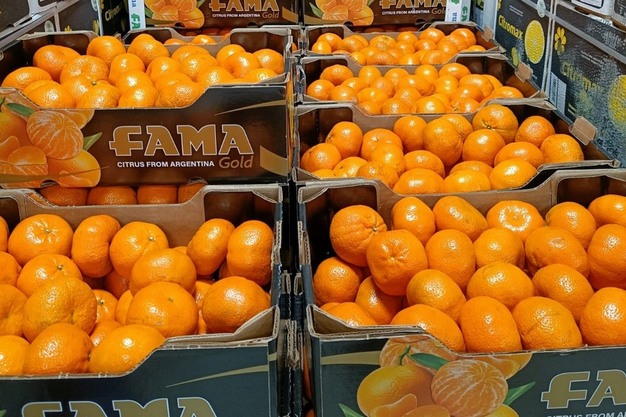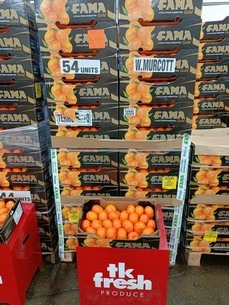The Argentine citrus season began positively with early oranges, supported by a lower global supply. However, weather and logistical issues hampered further progress. Initial prices benefited producers, but the July frost significantly reduced the exportable mandarin volume, and the ample supply from the southern hemisphere put pressure on late orange prices.
For FAMA, the season started more strongly than expected. "We expected to export 60 to 70 containers of varieties like Salustiana, Newhall, Washington Navel, and Midknight, but in the end, we exported over 120. The limited availability in the United States and Brazil, along with decreased shipments from Egypt due to higher internal consumption for concentrates, created a favorable environment for early Argentinean oranges," explained Nahuel, the company's representative.
 © FAMA
© FAMA
The outlook changed with the arrival of winter in the southern hemisphere. "A July frost caused about 50% losses in mandarins and also impacted oranges. It was the most serious issue we faced because the reduced exportable volume led to higher unit costs and lower competitiveness," Nahuel explained.
According to FAMA, "in late oranges, the strong presence of South Africa in international markets coincided with months of lower citrus consumption in the northern hemisphere, which pushed prices downward. The minimum FOB quotes were around $13 per 15kg box in category 1, with $11 to $12 for lower qualities."
 © FAMA
© FAMA
The company sees opportunities to expand into new markets but also acknowledges the challenges of maritime connectivity. "Reaching some markets can take anywhere from 50 to 70 days of transit, often involving multiple transshipments that increase risk and uncertainty," he stated.
FAMA is also progressing in varietal diversification. This year, it shipped its first Caracara blood oranges to targeted niche markets. "They will not replace the traditional varieties, but they have their place in the market, and we will continue developing them," Nahuel said.
"We expect a significant rebound in volumes next season. The flowering indicates a plentiful harvest, though the quality remains uncertain. We believe higher production will allow us to grow into new markets and strengthen our presence in existing ones," he added.
Regarding internal management, the company highlights progress in utilizing real-time data to enhance efficiency. "Today, it is essential to monitor each packing line, volume, discards, and calibers, and share this information with producers to improve results. Such management allows us to respond quickly in a rapidly changing business," Nahuel concluded.
As part of its international sector strategy, FAMA will participate in Fruit Attraction Madrid. The company will be located in Hall 12, Stand D10.
 For more information:
For more information:
Nahuel Lavino
FAMA
Tel: +34 636 497 142
Email: [email protected]
Email: [email protected]
www.citrusfama.com.ar
